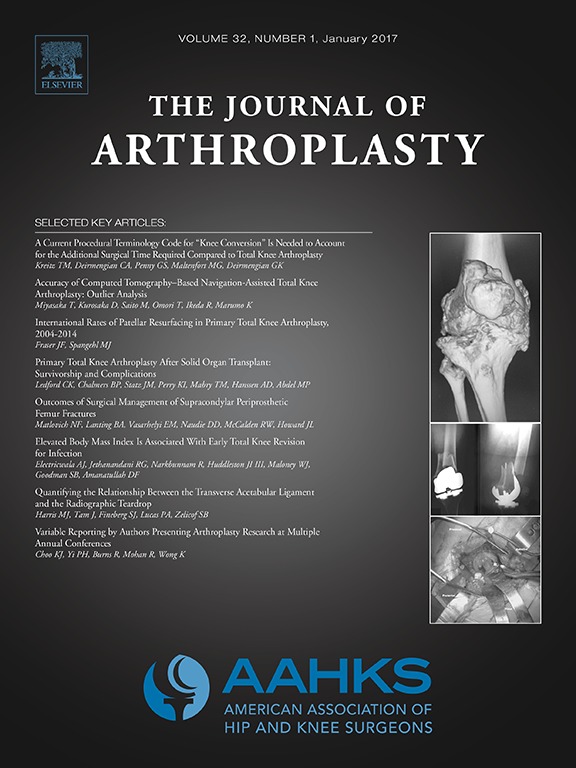
ARTHROPLASTY
Bicompartmental & total knee arthroplasty achieve similar knee function 2 yrs post-surgery
J Arthroplasty. 2014 Sep;29(9):1790-4.50 patients with knee osteoarthritis in the medial and patellofemoral compartments were randomly allocated to undergo bicompartmental (BKA) or total knee arthroplasty (TKA). The purpose of this study was to compare functional and clinical outcomes between groups up to two years after surgery. At final follow-up, bicompartmental and total knee arthroplasty achieved similar improvements in function, Knee Scores, Oxford Scores, and satisfaction. More BKA patients could complete the step up and over activity and had less trouble climbing stairs compared to TKA patients at 1 month post-surgery. However, the authors did not expand this study by performing additional cases after bicompartmental patients underwent revisions and the Deuce tibial component was recalled.
Unlock the full ACE Report
You have access to {0} free articles per month.Click below to unlock and view this {1}
Unlock NowCritical appraisals of the latest, high-impact randomized controlled trials and systematic reviews in orthopaedics
Access to OrthoEvidence podcast content, including collaborations with the Journal of Bone and Joint Surgery, interviews with internationally recognized surgeons, and roundtable discussions on orthopaedic news and topics
Subscription to The Pulse, a twice-weekly evidence-based newsletter designed to help you make better clinical decisions
Exclusive access to original content articles, including in-house systematic reviews, and articles on health research methods and hot orthopaedic topics
Or upgrade today and gain access to all OrthoEvidence content for just $1.99 per week.
Already have an account? Log in


Subscribe to "The Pulse"
Evidence-Based Orthopaedics direct to your inbox.
{0} of {1} free articles
Become an OrthoEvidence Premium Member. Expand your perspective with high-quality evidence.
Upgrade Now












































































